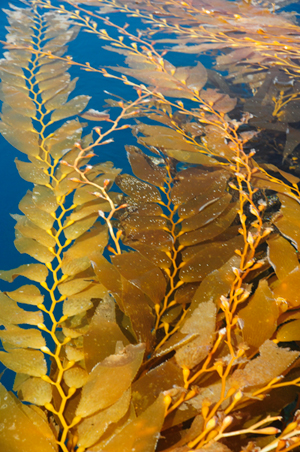I found a small beginner’s guide for those, who decided or have algae in their aquarium and i have also created a new category for this called Aquarium Algae.
Not all algae in the aquarium is necessarily ‘bad’ – a certain amount is inevitable where there is water, light and nutrients. However, some types of algae are certainly a nuisance, if for no other reason than looking unsightly.
The control or prevention of different algae types is primarily about nutrient control, and the amount of light. There are therefore some general guidelines which can be followed to help minimise algae:
Avoid direct sunlight falling on the tank, especially for prolonged periods. Unfortunately, despite the pleasant rippling light effects provided by sunlight, the rich lighting spectrum of the sun is likely to mean a constant battle against algae in most setups.
Do not leave lighting on for more than 10-12 hours a day. Longer periods are likely to favour algal growth, rather than promote plant growth.
Minimise nutrient levels with frequent water changes.
In particular, it may help to keep nitrates, phosphates and silicates low if you have a persistant problem – either by the use of reverse osmosis (RO) or deionised (DI) water, or specific adsorption resins (e.g. API Phos-Zorb). However, note that although high levels of such nutrients may encourage algae, it is not generally possible to completely eliminate algae by attempting to reduce them, as algae can survive at levels below those which can be measured by a hobbyist test kit.
Consider adding algae eating fish if appropriate to the setup. These include: suckermouth catfish (e.g. Ancistrus, Peckoltia and Otocinclus species), the Siamese Algae Eater (Crossocheilus siamensis) and mollies.
Note that in planted tanks (which is not really the same as tanks with a few plants in!), the most effective way to control algae growth is to plant heavily and promote vigorous plant growth of several different species, to out-compete the algae for nutrients. The management of a planted aquarium is beyond the scope of this article, and will be the subject of a future article, but an important nutrient with regard to plant versus algae growth in a planted tank is Iron, and controlling levels of this nutrient is likely to be important.
The taxonomy of algae and related organisms is complex, but for the purpose of identification in the aquarium, they can be conveniently grouped into the following:
- “Brown algae” (Diatoms)
- Green algae
- Red/Brush algae
- “Blue-green algae” (Cyanobacteria)
More details you will find here ( Source ): http://www.thetropicaltank.co.uk/algae.htm

 The brown colour of these algae results from the dominance of the xanthophyll pigment fucoxanthin, which masks the other pigments, Chlorophyll a and c (there is no Chlorophyll b), beta-carotene and other xanthophylls. Food reserves are typically complex polysaccharides, sugars and higher alcohols. The principal carbohydrate reserve is laminaran, and true starch is absent (compare with the green algae). The walls are made of cellulose and alginic acid, a long-chained heteropolysaccharide.
The brown colour of these algae results from the dominance of the xanthophyll pigment fucoxanthin, which masks the other pigments, Chlorophyll a and c (there is no Chlorophyll b), beta-carotene and other xanthophylls. Food reserves are typically complex polysaccharides, sugars and higher alcohols. The principal carbohydrate reserve is laminaran, and true starch is absent (compare with the green algae). The walls are made of cellulose and alginic acid, a long-chained heteropolysaccharide. Most brown algae have an alternation of haploid and diploid generations. The haploid thalli form isogamous, anisogamous or oogamous gametes and the diploid thalli form zoospores, generally by meiosis. The haploid (gametangial) and diploid (sporangial) thalli may be similar (isomorphic) or different (heteromorphic) in appearance, or the gametangial generation may be extremely reduced (Fucales). The brown Giant Kelp
Most brown algae have an alternation of haploid and diploid generations. The haploid thalli form isogamous, anisogamous or oogamous gametes and the diploid thalli form zoospores, generally by meiosis. The haploid (gametangial) and diploid (sporangial) thalli may be similar (isomorphic) or different (heteromorphic) in appearance, or the gametangial generation may be extremely reduced (Fucales). The brown Giant Kelp